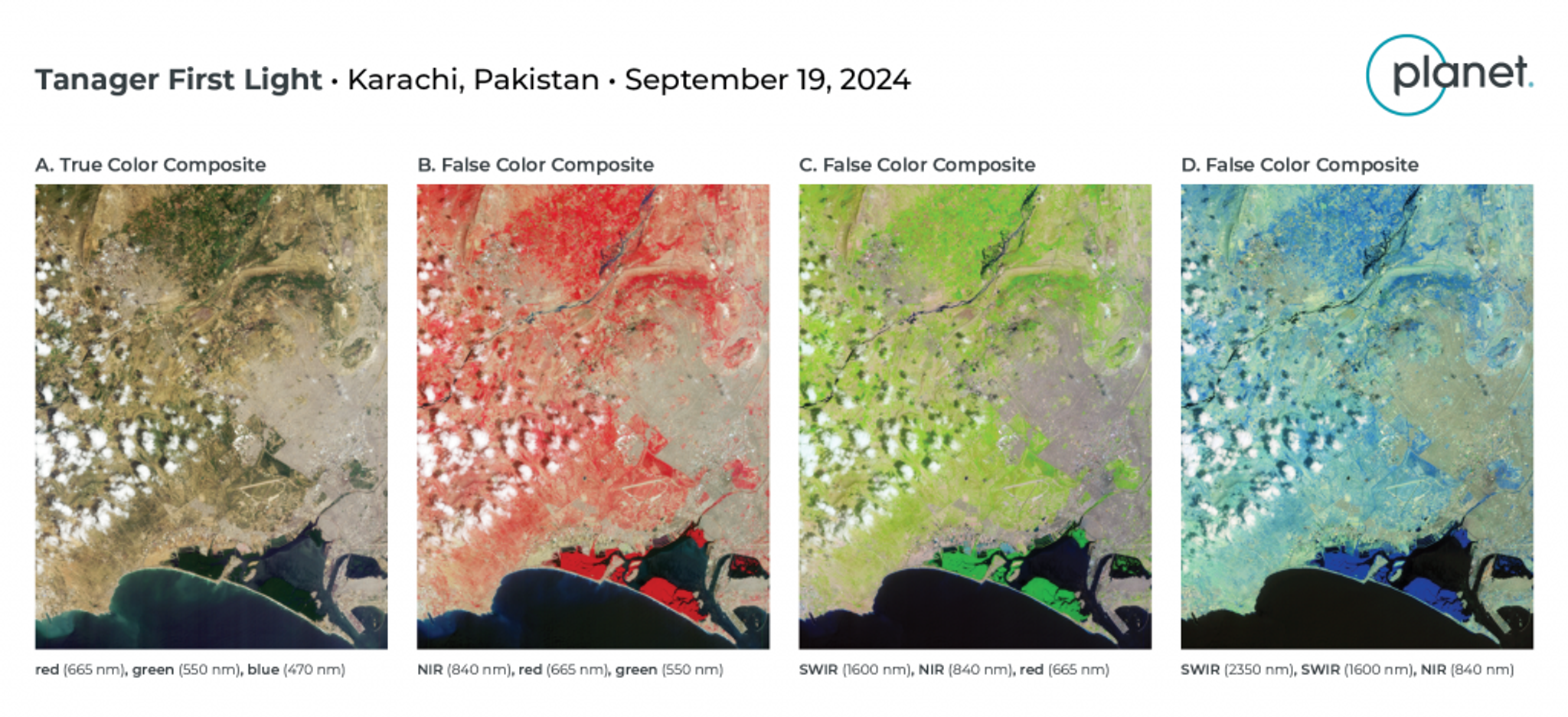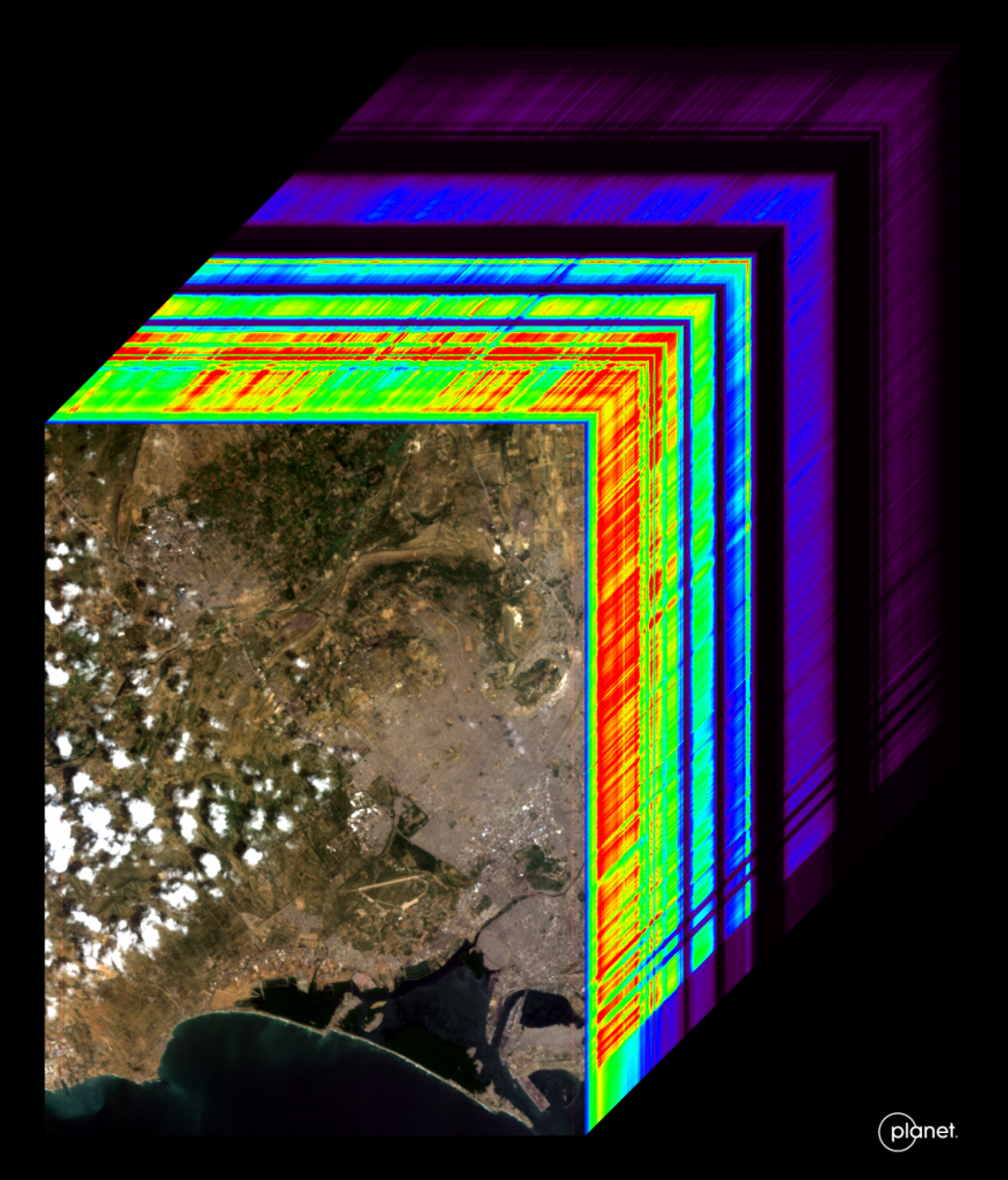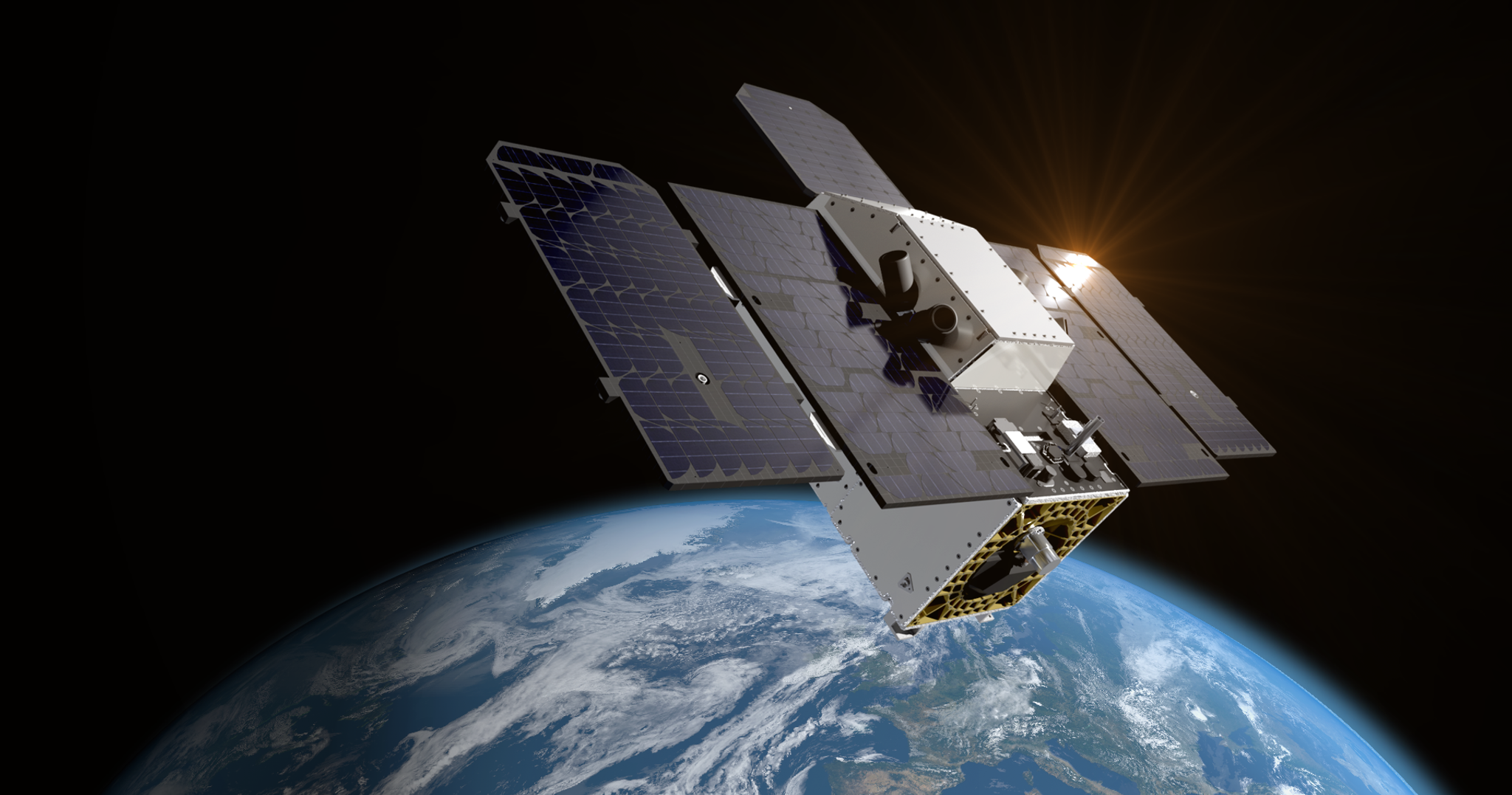First Light Images from Tanager-1 Hyperspectral Satellite
Today, we are thrilled to release our first light images from our Tanager-1 hyperspectral satellite. Our first set of imagery is of Karachi, Pakistan, and was taken on September 19th, 2024, from an altitude of 522 km.
In the following months, our partners, including Carbon Mapper and customers are expected to use the data to monitor and mitigate point-source methane and CO2 emissions, two potent greenhouse gasses. We also plan to make the hyperspectral data commercially available for a variety of use cases including defense and intelligence monitoring, biodiversity assessments, mineral mapping, water quality assessments, and much more.
Tanager-1 launched on Transporter-11 on August 16th, 2024. This is the second Planet satellite to leverage the our Smallsat platform and went through a one-month satellite bus commissioning process. “We are pleased to have already progressed to first light activities. Leveraging our decade of operational experience, our teams are rapidly making progress towards production operations of this satellite,” said Mark Longanbach, Planet’s Senior Vice President of Missions.
The satellite is the first of a planned hyperspectral constellation (made possible by the Carbon Mapper Coalition) that combines Planet’s cutting-edge agile aerospace and smallsat bus technology with the state-of-the-art imaging spectrometer design developed at NASA’s Jet Propulsion Laboratory (NASA JPL). Tanager-1 is capable of imaging all wavelengths between 400 - 2500 nm simultaneously and is expected to provide rich datacubes—images of the ground but with 420 colors (‘spectral channels’)—that enable users to detect a multitude of surface features from gas emissions to ground chemicals to plant species. In the released imagery, we show a standard RGB image, a false-color near-infrared image, and false-color shortwave infrared images to showcase the broad wavelength range addressed by the satellite. These images showcase only 6 of the 400 total bands available to Tanager.

Tanager first light images of Karachi, Pakistan taken on September 19th, 2024. Each of these images is composed of 3 of the over 400 bands that Tanager collects with each capture.

A hypercube visualizing the range of wavelengths collected by Tanager. In the lower left is a visible-light image of Karachi, Pakistan collected on September 19th, 2024. Up and to the right is a cross section of all the bands collected by Tanager spanning from 400 - 2500 nm.
“Tanager first light is the biggest program milestone yet,” said Mark Keremedjiev, Planet’s Mission Director for the Tanager Hyperspectral Mission. “This image demonstrates Planet’s world-class imaging spectrometer and provides a tangible result to the years of investment and effort. It’s early days but we are very pleased with the quality we are seeing, and we believe that first light is but a preview of amazing things to come.”
We plan to continue to build on the success of our Smallsat platform as Pelican-2 progresses towards launch readiness in the coming months. With this modular and extensible platform, we are applying our agile aerospace development philosophy to both of our Pelican and Tanager missions to drive continuous improvements in the products we offer our customers.
We will continue with payload commissioning activities over the coming months and plans to begin delivering data to customers in 2025.
Forward Looking Statements
Except for the historical information contained herein, the matters set forth in this press release are forward-looking statements within the meaning of the "safe harbor" provisions of the Private Securities Litigation Reform Act of 1995, including, but not limited to, the Company’s ability to capture market opportunity and realize any of the potential benefits from current or future product enhancements, new products, or strategic partnerships and customer collaborations, the Company’s ability to successfully design, build, launch and deploy, operate and market new products and satellites and the Company’s ability to realize any of the potential benefits from product and satellite launches, either as designed, within the expected time frame, in a cost-effective manner, or at all. Forward-looking statements are based on the Company’s management’s beliefs, as well as assumptions made by, and information currently available to them. Because such statements are based on expectations as to future events and results and are not statements of fact, actual results may differ materially from those projected. Factors which may cause actual results to differ materially from current expectations include, but are not limited to the Company’s ability to obtain and maintain required licenses and approvals from regulatory agencies, such as the Federal Communications Commission (FCC), in a timely fashion, or at all; whether the Company will be able to successfully build, launch and deploy or operate its satellites, including new satellites either as designed, in a timely fashion or at all; the Company’s ability to develop and release product and service enhancements to respond to rapid technological change, or to develop new designs and technologies for its satellites, in a timely and cost-effective manner; whether the Company will be able to continue to invest in scaling its sales organization, expanding its software engineering (including its ability to integrate new satellite capabilities) and marketing capabilities; whether the Company will be able to accurately predict and capture market opportunity; whether current customers or prospective customers adopt the Company’s platform or new products; the Company’s ability realize any of the potential benefits from new products and satellites, as well as strategic partnerships and customer collaborations; and other risk factors and disclosures about the Company and its business included in the Company's periodic reports, proxy statements, and other disclosure materials filed from time to time with the Securities and Exchange Commission (SEC) which are available online at www.sec.gov, and on the Company's website at www.planet.com. All forward-looking statements reflect the Company’s beliefs and assumptions only as of the date such statements are made. The Company undertakes no obligation to update forward-looking statements to reflect future events or circumstances.

Ready to Get Started
Connect with a member of our Sales team. We'll help you find the right products and pricing for your needs


